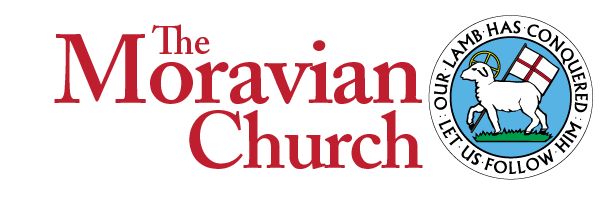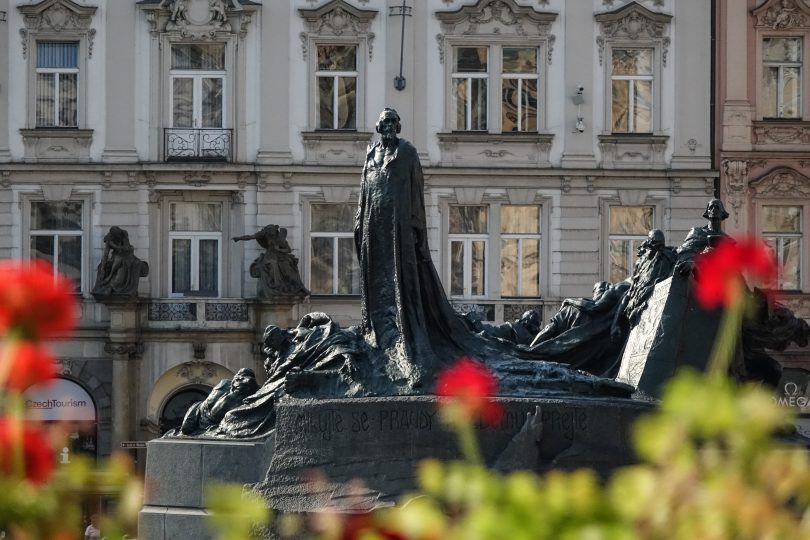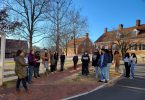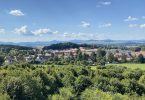For many of us, summer is a time of relaxation, vacation and fun. But for our Moravian ancestors, summer proved to be a very eventful time, with some of the most significant events shaping the church occurring during the “dog days.”
I got to thinking about this while preparing a display of photographs for an exhibition in Nazareth, Pennsylvania. The photos were from the 2015 Moravian Roots Tours directed by the Moravian Theological Seminary. On that trip, we visited key landmarks in the birth and growth of our church – Prague, the hills of Bohemia and Moravia, and the area around Herrnhut in eastern Germany.
A look through our Moravian calendar shows three very significant historical highlights occurring over the summer. The first? July 6, also known as the Jan Hus Festival. Each summer, congregations offer special services commemorating the death—and more importantly, the life—of Jan Hus. While many consider Hus the founder of the Moravian Church, that’s not quite true. Hus was a popular preacher, a prolific writer and a reformer who challenged the corruption of the church, but did not start a new church. His teachings, however, inspired the establishment of the Unitas Fratrum, the forebear of our modern-day church, 40 years after his death.
During our Roots tour, we were in Prague for 600th anniversary of Hus’ death. In the Czech Republic, Hus is a not only a religious figure; he’s also seen as a national hero. As a member of our church, the events on July 6, 2015 were moving and memorable. And having experienced July 6 in Prague, the Hus Festival has become more meaningful for me ever since.
Later in the summer, we Moravians celebrate the August 13th Festival. What’s so special about the 13th of August?
The August 13th Festival celebrates a renewal of the Unitas Fratrum in Herrnhut, Germany, that established the church we know today. During the 1720s, those living in the community of Herrnhut on Count Zinzendorf’s estate had become fractured and discordant over matters of doctrine. Zinzendorf refocused his efforts on the religious settlement and in May 1727, with the acceptance of the Brotherly Agreement, harmony in the community began to improve. At the same time, Zinzendorf learned more about the system of church discipline of the
Bohemian Bretheren—the ancestors of many of the settlers on his estate—and realized how similar it was to his thinking.
Later that summer, the community gathered on Wednesday morning of August 13 for a communion service in the church in the small town of Berthelsdorf, just north of Herrnhut. Those at that service felt an overwhelming outpouring of the Holy Spirit; one account says, “the old bitterness, the hard words and the anger were all being washed away in a flood of tears.” The experience was so powerful, many consider it a Moravian Pentecost, and many view it as the birth of the church as we know it today. The events of August 13, 1727 also form the basis of one of our most treasured Moravian traditions: the lovefeast.
But the summer’s not over yet! Later in August, we celebrate a third key anniversary that is central to our Moravian tradition: August 21. On that date in 1732, two of our most famous missionaries, Leonard Dober and David Nitschmann, set off for their work in St. Thomas, thus beginning the mission work that would come to define Moravians through today. It is written that Zinzendorf accompanied Dober and Nitschmann on the first 15 miles of their journey, blessing them and sending them out into the world. There would be many more to follow.
As I sorted through my photos for the exhibit, I realized that 2015 trip made each of these summer days take on a greater meaning for me; they’ve become so much more than dates in my Moravian Desk Calendar and Plan Book (which, by the way, we are working on for 2020). These are special occasions to celebrate what our Moravian church has accomplished over the years, remembering how our foundations in Prague and Herrnhut educate our traditions and practices today.
In this issue of the Moravian, we hear from a group of young Moravians who followed in Dober and Nitschmann’s footsteps on the 2019 Young Adult Convo. Traveling to the U.S. Virgin Islands – St. Thomas and St. John – the youth and their leaders learned about the inspirational work of these early missionaries and their impact on the church there today. They also took on mission work themselves, pitching in to help restore the Emmaus Moravian Church ravaged by hurricanes.
We also share stories of racial reconciliation in both a moving trip to Montgomery, Alabama and the return of a congregation to its original home in Salem. Other articles illustrate how Ohioans celebrate the missionary work of David Zeisberger in a long-running stage play, how a group of musicians come together to trade songs, how one young pastor is working two careers, and more.
So as you’re vacationing this summer and enjoying all July and August have to offer, remember we Moravians have much to celebrate. July 6, August 13 and August 21 are summer days Moravians should be proud of.
Peace,
Mike Riess, Editor






